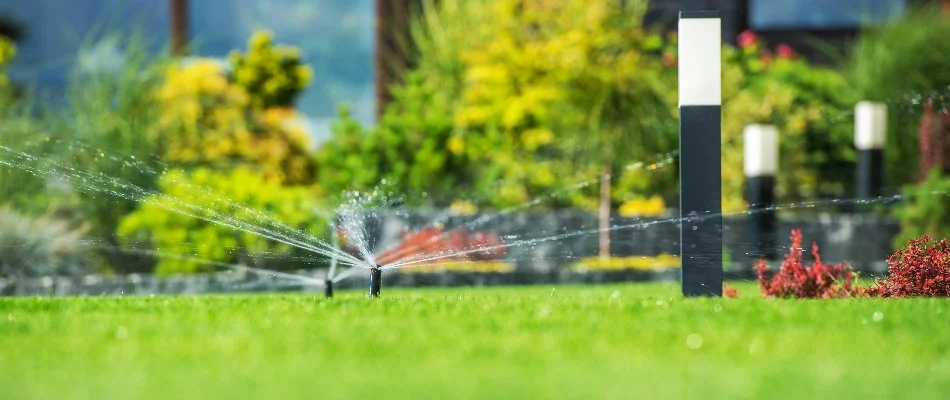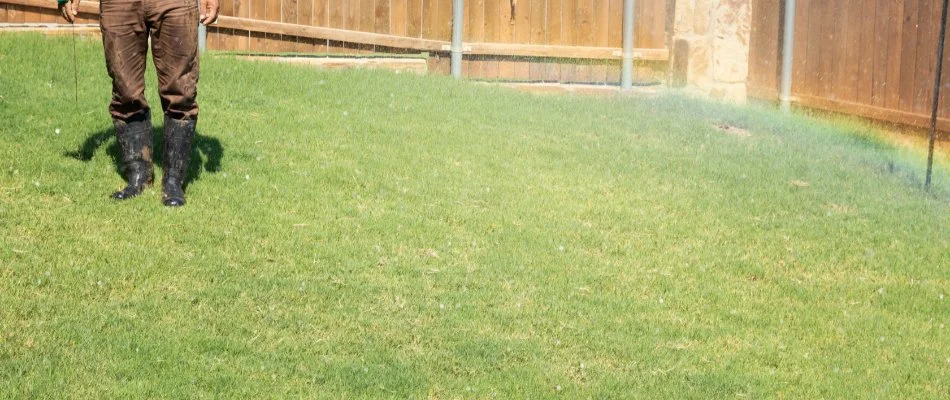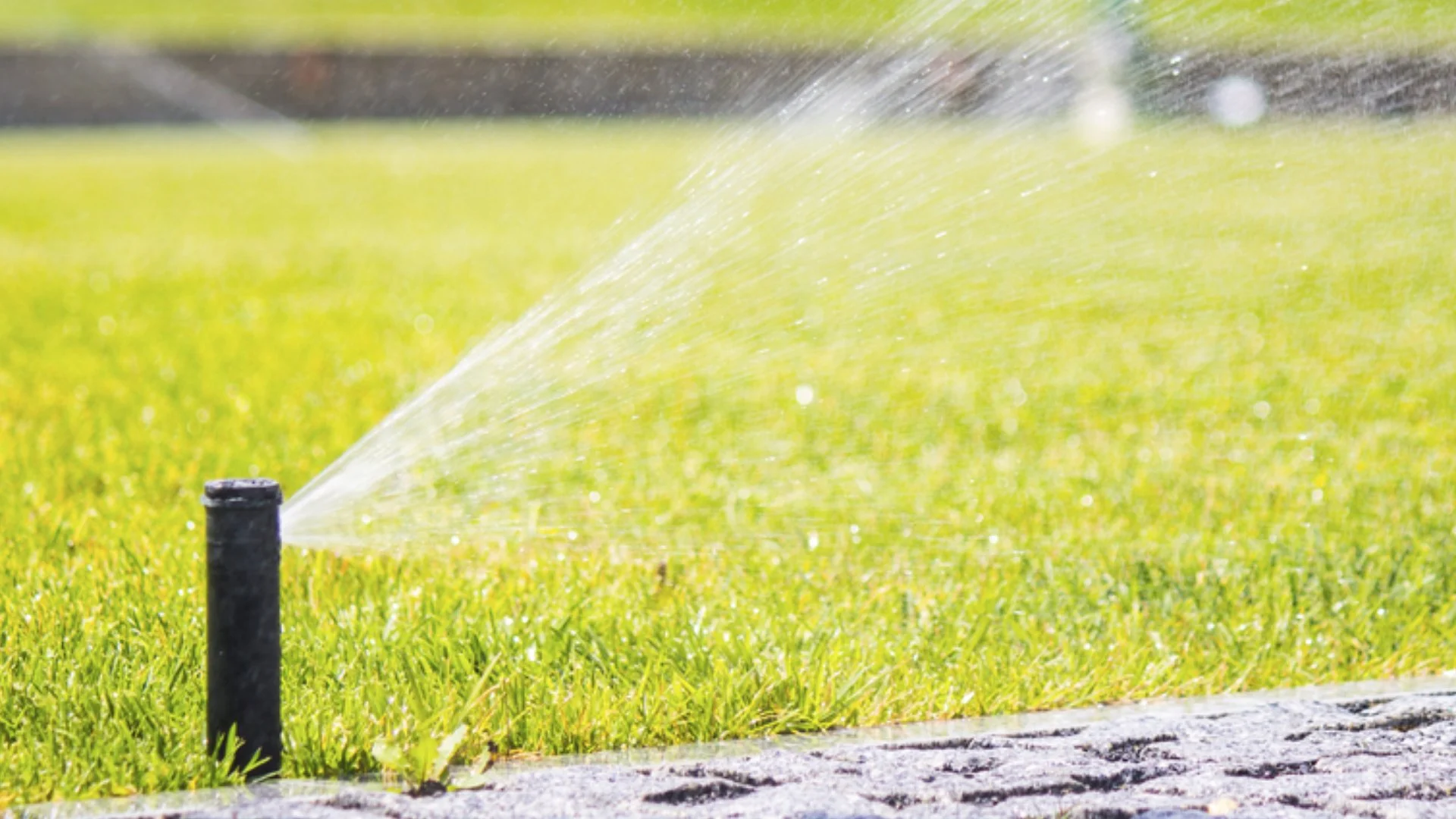Mastering the operation of your Rain Bird ESP-ME3 irrigation system is key to keeping your lawn in Texas properly hydrated. This guide provides a step-by-step breakdown of how to use its intuitive controls including date/time settings, start time and run-time adjustments, selecting watering days, optimizing your system with the weather sensor and seasonal adjustment setting, importance of a flow sensor, and ensuring your system is working properly with the manual watering and auto setting.
Understanding how to use Rain-Bird ESP-ME3's easy-to-use controls will allow you to effortlessly manage your irrigation system and ensure your lawn and plants stay hydrated.
How to Adjust the Date/Time
When you first access your irrigation system's settings, you'll encounter the date and time section. This crucial setting ensures your system operates efficiently and accurately. The different setting options this section offers include:
-
Date Adjustment: Use the left and right arrows to navigate between the day, month, and year options. Press the plus and minus buttons to change the numbers up or down, ensuring the date is set correctly.
-
Time Adjustment: Similarly, use the left and right arrows to select hours and minutes. Utilize the plus and minus buttons to adjust the time, ensuring your system operates at the desired times.
-
Clock Format: You can choose between a 12-hour or 24-hour clock format, catering to your preference. This feature is especially useful for those who prefer military time for scheduling irrigation cycles.
By carefully adjusting the date and time settings, you'll ensure your irrigation system operates precisely when needed, helping maintain a healthy and vibrant landscape.
How to Setup the Start Times
After setting your date and time, the next vital section to explore on your Rain Bird ESP-ME3 is the start times section. This setting allows you to define when your irrigation system begins watering your lawn.
The Rain Bird ESP-ME3 offers program-based scheduling, allowing each program to have its start times, and providing flexibility in watering different zones of your lawn. Use the program select button to switch between programs A through D. This selection enables you to strategically schedule when different zones of your lawn receive water.
You can also use this section to assign your turf zones and other areas of your lawn that require watering on the same days to different programs. For example, if you plan to water turf zones every two days, program A can accommodate this schedule. You can then use program B for zones that require more frequent watering but for shorter durations, such as flower pot zones. This separation ensures these zones receive the appropriate amount of water without overwatering other areas.
How to Set the Run Times

When it comes to setting your irrigation system's run times, it's important to note that every system is unique, and getting an exact run time from a professional over the phone can be challenging. However, with the Rain Bird ESP-ME3, you can easily set your run times using the following steps:
-
Accessing Station Settings: Use the right and left arrows on the ESP-ME3 controller to navigate to the desired station you want to adjust.
-
Adjusting Run Times: Once you've selected the station, use the plus and minus buttons to adjust the time you want the system to run for that station. This allows you to customize the watering duration for each specific area of your lawn or garden.
Scheduling the Watering Days
In this section of the irrigation system, you can easily set your watering days using the intuitive controls of the Rain Bird ESP-ME3. Use the left and right arrow buttons to move between the different days of the week displayed on the screen. You can then activate a watering day by simply pressing the plus button. Conversely, to deactivate a day, press the minus button. This flexibility allows you to customize your watering schedule based on your lawn's needs and local regulations.
How to Turn on the Weather Sensor
The weather sensor setting is a valuable feature that helps prevent water waste and protects your system from potential ice damage. When activated, this setting ensures that your system does not run during rain events or freezing temperatures, promoting water conservation and system longevity. It's crucial to have this sensor turned on to maximize the efficiency of your irrigation system. By utilizing the weather sensor setting, you can minimize water waste and avoid unnecessary irrigation during unfavorable weather conditions, ultimately saving water and ensuring the health of your landscape.
How to Make Seasonal Adjustments
This setting offers a convenient way to make quick and easy changes to your watering schedule throughout the year. This feature saves you time by allowing you to adjust the entire system's watering duration with just a few button presses. Instead of manually adjusting each zone and station, you can use the plus or minus buttons to increase or decrease the watering duration for the entire system.
This functionality is particularly useful for adapting your watering schedule to seasonal and weather changes. For instance, it's advisable to set the seasonal adjust setting to 100% for spring and early summer when plants require more water due to growth. As temperatures rise in the summer, you can increase the setting to 120-150% to accommodate higher water needs. A helpful tip is to align the seasonal adjust setting percentage with the outdoor temperature, except for during the hottest times of the year. For example, if it's 70 degrees Fahrenheit outside, setting the seasonal adjust setting to 70% can help ensure your lawn and plants receive the appropriate amount of water.
How to Turn on the Flow Sensor
The flow sensor is a setting that few people have for this model, but if you do, it's best to ensure that this setting is turned on. This will offer even greater water monitoring and can alert you if the water pressure is too low or too high.
How to Use the Manual Watering/Auto Features

This setting offers a simple and quick approach to ensuring your irrigation system is operating properly. To start, add a few minutes to the timer by pressing the plus button. Once you've made your adjustment, press and hold the right arrow until the display indicates that the system is starting. Then, turn the knob to the "auto" section. This allows you to walk around your system and check for any leaks or coverage issues while the system is running. This hands-on approach allows you to check if your irrigation system is operating efficiently and effectively, helping you maintain a healthy landscape.
Need help programming your irrigation system? Call us today!
Struggling to set up your Rain Bird ESP-ME3 for optimal performance? Our skilled professionals at CitiTurf are here to assist you! We offer comprehensive checkups for your irrigation system, ensuring each zone is working efficiently and effectively.
If any issues arise during our checkup, our team of licensed technicians can promptly repair your system, ensuring it operates at its best. We specialize in servicing residential properties in Plano, Allen, Frisco, McKinney, Murphy, and nearby areas in Texas. Don't let irrigation woes stress you out. Call us today at 972-516-0001 to schedule an appointment and take the first step toward a healthier, greener lawn!







